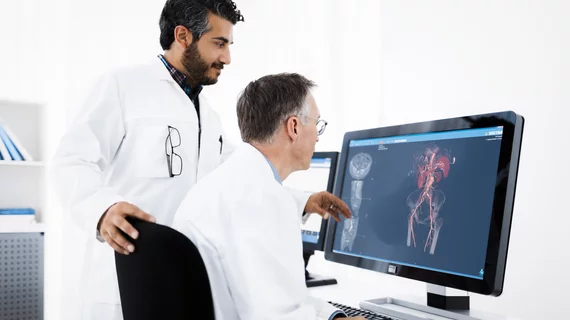A new paper in Radiology explores factors that can lead to reader variability in CT imaging, from the radiologist’s experience level and subspecialty to navigation patterns and time spent interpreting.
“Radiologists detect abnormalities with different levels of performance, and this variability can undermine patient care. While substantial effort has been invested in reducing CT image noise, minimal efforts have been made to address differences that exist among readers themselves,” corresponding author Scott Hsieh, of the Department of Radiology at Mayo Clinic Rochester, and colleagues explained [1].
The researchers' work focused on the detection of liver metastases on contrast-enhanced abdominal CT exams and included a total of 25 readers with varying backgrounds—nine subspecialized abdominal radiologists, five nonabdominal staff radiologists and 11 senior residents or fellows. The readers were presented with 40 scans (eight normal, 32 containing 91 liver metastases) to interpret while workstations tracked their image navigation patterns and eye movements.
The abdominal radiologists were found to have the highest AUC in comparison to their peers, while sensitivity was similar within the reader experience groups.
Sensitivity was higher based on certain navigation patterns, the experts shared, including longer interpretation times and more frequent utilization of coronal images. Gaze times of less than half a second accounted for 29% of missed metastases, while the other 71% of missed findings had longer gaze times, indicating that visual search was not the primary source of errors. Longer gaze times resulted in an increase in both false positive and true positive findings.
“Detection is often modeled as a process consisting of two components: search and classification. More extensive image navigation enables a more effective search; hence, it is unsurprising that longer interpretation times were associated with higher sensitivity,” the authors wrote, adding that these findings could be used to improve training variables in the future.
More information can be found here.

